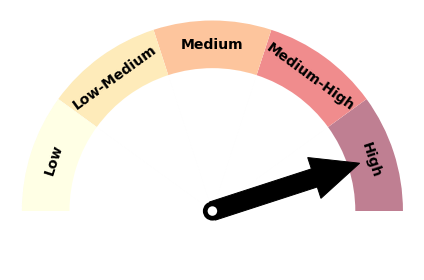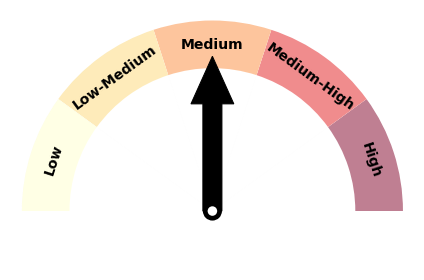Outlook summary
- Consistent with moderate La Niña conditions, December 2020 – February 2021 air pressure is forecast to be higher than normal over and to the southeast of the South Island and lower than normal to the northwest of New Zealand. This is expected to be associated with northeasterly air flow anomalies. For more information, see the background section.
- Although patterns of higher than normal pressure and drier conditions are expected to start summer, moist, sub-tropical disturbances are expected to reach the country occasionally, particularly the North Island and northern South Island. These systems can cause areas of heavy rainfall and flooding.
- Marine heatwave conditions formed near the northern North Island and northern Tasman Sea during November. Unusually warm seas in other coastal regions may develop into a marine heatwave over summer.
- Air temperatures are very likely to be above average in all regions of the country with elevated humidity levels from time to time, particularly in the North Island. (A marine heatwave is defined as periods of extremely warm sea surface temperatures that persist for a prolonged period of time and can extend up to thousands of kilometres.)
- Rainfall is about equally likely to be near normal or below normal in the east and west of the South Island and about equally likely to be near normal or above normal in all remaining regions of the country. Extended dry spells may be interspersed with the expected unsettled periods.
- For the tropical cyclone season (November 2020-April 2021), NIWA’s Southwest Pacific Tropical Cyclone Outlook indicates that the risk for New Zealand is elevated. On average, one ex-tropical cyclone passes near the country each year. Significant rainfall, damaging winds, and coastal inundation can occur during these events.
- Soil moisture levels are about equally likely to be near normal or below normal in the west of both islands and the east of the South Island and most likely to be near normal in the north of both islands. There is no strong guidance for the east of the North Island.
- River flows are about equally likely to be near normal or below normal in the west and east of the South Island, about equally likely to be near normal or above normal in the north of the North Island, and most likely to be near normal in the remaining regions of the country.
Regional predictions for December 2020 – February 2021
Northland, Auckland, Waikato, Bay of Plenty
The table below shows the probabilities (or percent chances) for each of three categories: above average, near average, and below average. In the absence of any forecast guidance there would be an equal likelihood (33% chance) of the outcome being in any one of the three categories. Forecast information from local and global guidance models is used to indicate the deviation from equal chance expected for the coming three-month period, with the following outcomes the most likely (but not certain) for this region:
- Temperatures are very likely to be above average (80% chance).
- Rainfall totals are about equally likely to be above normal (40% chance) or near normal (35% chance).
- Episodes of heavy rainfall are possible through the season, which could increase the chance for flooding events.
- Soil moisture levels are most likely to be near normal (45% chance) while river flows are about equally likely to be near normal (40% chance) or above normal (35% chance).
The full probability breakdown is:
|
Temperature |
Rainfall |
Soil moisture |
River flows |
|
|
Above average |
80 |
40 |
30 |
35 |
|
Near average |
15 |
35 |
45 |
40 |
|
Below average |
05 |
25 |
25 |
25 |
Central North Island, Taranaki, Whanganui, Manawatu, Wellington
Probabilities are assigned in three categories: above average, near average, and below average.
- Temperatures are very likely to be above average (75% chance).
- Rainfall totals are about equally likely to be near normal (40% chance) or above normal (35% chance).
- Soil moisture levels are about equally likely to be near normal (40% chance) or below normal (35% chance) while river flows are most likely to be near normal (45% chance).
The full probability breakdown is:
|
Temperature |
Rainfall |
Soil moisture |
River flows |
|
|
Above average |
75 |
35 |
25 |
25 |
|
Near average |
20 |
40 |
40 |
45 |
|
Below average |
05 |
25 |
35 |
30 |
Gisborne, Hawke’s Bay, Wairarapa
Probabilities are assigned in three categories: above average, near average, and below average.
- Temperatures are very likely to be above average (75% chance).
- Rainfall totals are about equally likely to be above normal (40% chance) or near normal (35% chance).
- Episodes of heavy rainfall are possible through the season, which could increase the chance for flooding events.
- Soil moisture levels are most likely to be near their climatological value while river flows are most likely to be near normal.
The full probability breakdown is:
|
Temperature |
Rainfall |
Soil moisture |
River flows |
|
|
Above average |
75 |
40 |
30 |
30 |
|
Near average |
20 |
35 |
35 |
40 |
|
Below average |
05 |
25 |
35 |
30 |
Tasman, Nelson, Marlborough, Buller
Probabilities are assigned in three categories: above average, near average, and below average.
- Temperatures are very likely to be above average (70% chance).
- Rainfall totals are about equally likely to be near normal (40% chance) or above normal (35% chance).
- Soil moisture levels and river flows are most likely to be near normal (40% chance).
The full probability breakdown is:
|
Temperature |
Rainfall |
Soil moisture |
River flows |
|
|
Above average |
70 |
35 |
30 |
30 |
|
Near average |
20 |
40 |
40 |
40 |
|
Below average |
10 |
25 |
30 |
30 |
West Coast, Alps and foothills, inland Otago, Southland
Probabilities are assigned in three categories: above average, near average, and below average.
- Temperatures are very likely to be above average (75% chance).
- Rainfall totals are about equally likely to be below normal (40% chance) or near normal (35% chance).
- Soil moisture levels and river flows are about equally likely to be below normal (40% chance) or near normal (35% chance).
The full probability breakdown is:
|
Temperature |
Rainfall |
Soil moisture |
River flows |
|
|
Above average |
75 |
25 |
25 |
25 |
|
Near average |
20 |
35 |
35 |
35 |
|
Below average |
05 |
40 |
40 |
40 |
Coastal Canterbury, east Otago
Probabilities are assigned in three categories: above average, near average, and below average.
- Temperatures are very likely to be above average (70% chance).
- Rainfall totals are about equally likely to be near normal (40% chance) or below normal (35% chance).
- The lower part of this region, including South Canterbury and east Otago, has a higher chance of experiencing below normal rainfall than areas north of Christchurch.
- Soil moisture levels and river flows are equally likely to be below normal (40% chance) or near normal (40% chance).
The full probability breakdown is:
|
Temperature |
Rainfall |
Soil moisture |
River flows |
|
|
Above average |
70 |
25 |
20 |
20 |
|
Near average |
20 |
40 |
40 |
40 |
|
Below average |
10 |
35 |
40 |
40 |
Graphical representation of the regional probabilities
Background
The NINO3.4 Index anomaly (in the central Pacific) for November (through the 22nd) was -1.03˚C, signifying that the ongoing La Niña event has moved into the moderate strength category. The SOI (Southern Oscillation Index) value for November (through the 28th) was +0.7 (on the La Niña side of neutral).
La Niña’s signature remains prominent in the upper-oceanic heat content pattern, with well below normal temperatures in the central equatorial Pacific and continued above average warmth in the west. In the east, some warming was observed closer to the surface. This likely indicates a progression toward a central Pacific La Niña, as opposed to a more traditional east-based event. This could help to describe a summer season that has a mixture of drier westerlies and wetter northerlies in New Zealand.
With La Niña’s peak expected in early 2021, tropical trade winds are expected to continue to be stronger than average over the next several months.
While La Niña is expected to be the primary planetary climate driver over the next 3-6 months, an eastward advancement of the West Pacific warm pool was noted at depth in the equatorial Pacific during November. Should the advancement of this warm pool continue, it could cause a transition away from La Niña during mid-2021.
According to the consensus from international models, the probability for La Niña conditions is 97% for December 2020 – February 2021. For March – May 2021, the probability for La Niña is 57% and 42% for ENSO-neutral conditions. During June – August 2021, ENSO neutral conditions are favoured (56% chance).
During November, marine heatwave conditions formed in the north of the North Island, extending east and west of the region into the Pacific and Tasman Sea. Coastal water temperatures also warmed notably in the east of both islands and west of the South Island. This outlook favours the continuation of unusually warm seas, with marine heatwave conditions possibly developing in other regions. Abnormally warm ocean temperatures can have a profound impact on air temperatures over land and provide fuel to cyclones approaching from the north. The marine and fisheries sectors should keep an eye on this evolving situation, as it could be similar to what occurred in late 2017-early 2018.
New Zealand Coastal Sea Surface Temperatures during November 2020 (to the 28th):
|
North NI |
+1.51˚C |
|
West NI |
+0.83˚C |
|
East NI |
+1.04˚C |
|
North SI |
+0.70˚C |
|
West SI |
+1.09˚C |
|
East SI |
+0.96˚C |
Forecast confidence
Temperature

|
Forecast confidence for temperatures is high. Substantially warmer than average local sea temperatures, sub-tropical winds, and strong climate model agreement supports this outlook. |
Rainfall

|
Forecast confidence for rainfall is medium. Although a strong climate driver (La Niña) should increase predictability, some non-traditional impacts are possible, as described in the background section. This confidence level is reflected by the relatively flat tercile (i.e. percentage) distribution for seasonal rainfall. |





